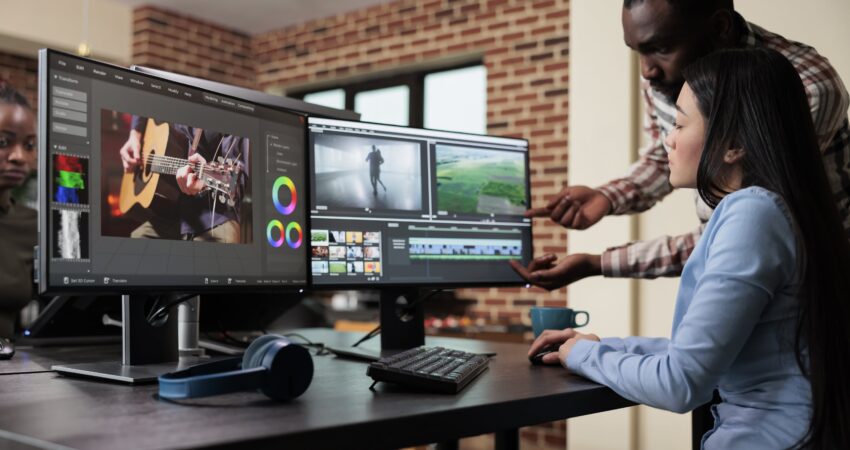
Motion Graphics and Animation
Motion graphics and animation both involve moving visuals, but there is a slight difference between the two. Motion graphics typically focus on creating animated designs, text, and graphical elements to communicate a message, while animation involves bringing characters, objects, or illustrations to life through movement. Motion graphics can be used as part of animation, but animation encompasses a wider range of storytelling techniques and techniques.
Motion graphics and animation are both techniques used to create visually appealing content, but they have different specific uses, techniques, and purposes. This blog post explores the differences between motion graphics and animation, how to use them, and which one is right for your business. Motion graphics is a type of animation that primarily focuses on the movement of graphic elements in a 2D environment.
Motion graphics are mostly used in promotional videos, music videos, intros, explainer videos, and social media content. The main purpose of motion graphics is to captivate the audience and present information in an easy-to-understand manner. Unlike traditional animation, motion graphics tend to be fast, have sophisticated designs, and emphasize typographic and graphic design elements.
Types of Motion Graphics
- Data visualizations are great for presenting statistics and other numerical data. They can include graphs, charts, and other exciting graphic elements. Data visualization is often used in marketing, sales, and educational videos.
- Title sequences are used at the beginning of movies, TV shows, and video games. You can introduce the names of the cast, staff, production staff, etc., and decide the atmosphere of the content after that.
- 3 Instructional videos are great for communicating complex topics in a short amount of time. Use graphics, text, and animation to convey information in a visually appealing way.
- Social Media Content In today’s social media world, motion graphics are widely used to create short pieces of content that grab the attention of social media users as they scroll through their feeds.
Understanding animation, on the other hand, is a broad term that covers everything from cartoons and stop-motion animation to computer-generated images (CGI) found in movies, video games, and TV shows. Traditional animation is two-dimensional or three-dimensional and is based on the principle of making a drawing or model appear to be moving. Animation is widely used in feature films, documentaries, cartoons, and video games. His main goal is storytelling.
Types of Animation
- Traditional animation involves drawing each frame by hand. Once all the frames are completed, the animation is put together using a technique called cel animation. This type of animation is often used in feature films and animated television shows.
- 3D animation involves manipulating 3D objects to create the illusion of movement. 3D animation is used in video games, feature films, and television shows.
- 3 Stop-motion animation captures frame after frame of a physics object. Each image captures a different moment and is animated to create the illusion of movement. Stop-motion animation is often used in short films.
Motion Graphics and Animation: What’s the Difference?
The main difference between motion graphics and animation is that motion graphics primarily focuses on the movement of graphic elements whereas animation focuses on creating a complete story or narrative involving characters and objects. is that we are guessing Motion graphics usually focus on typography and text, whereas animation focuses on characters and their movements.
Motion graphics tend to be simple with sleek, modern designs using typography and animation, while 2D and 3D animation are often more complex, requiring character and background modeling, manipulation, and movement. Each frame should be animated to create an illusion.
When to Use Motion Graphics and Animation When deciding whether to use motion graphics or animation, consider the purpose, style, and target audience of your content. Motion graphics are most suitable when presenting information such as data, narratives, and other concepts in an easily digestible way. In contrast, animation is great for engaging viewers with characters and stories, such as in TV shows, movies, and video games.
Key Characteristics of Animation
Animation’s important traits include the following:
- Timing: The animation’s pace, which includes the rate at which the action unfolds and the duration of individual frames.
- Movement: The animated elements’ movements change with time, including the use of smooth and fluid motion as well as abrupt and staccato motions.
- Ease in and ease out: Movement begins and ends, with progressive acceleration and deceleration producing a more realistic and convincing motion.
- Interaction: The interaction of several animated components, such as characters and objects moving about one another.
- Shape: The animation elements’ visual design, including colors, texture, and shape, generates a sense of depth and dimension.
- Storytelling: The use of animation to tell a story and communicate a message or concept visually.
- Sound and music: Sound effects and music may improve the animation and provide a more immersive experience for the spectator.
- Appeal: The capacity to elicit emotions and humor, as well as to establish an emotional connection with the audience.
Advantages and Disadvantages of Animation
Among the benefits of animation are:
- It provides creative freedom: animation can create any environment, character, or item you can think of, with the only limitations being technology and the artist’s talent and creativity.
- It can communicate complicated concepts and information interestingly and understandably. Abstract topics may be simplified by animation, making them more accessible to a wider audience.
- Characters with unique personalities, feelings, and motives may be created with animation, making them more relevant to the viewer.
- It may evoke a sense of movement and motion by producing dynamic and intriguing visuals that capture and hold the audience’s attention.
- It may be employed in a variety of disciplines, including animation in cinema, television, video games, mobile applications, and web design.
The following are some of the disadvantages of animation:
- Producing it may be time-consuming and costly. Creating animation takes a tremendous amount of time and money, especially for high-quality, feature-length films.
- It may be technically challenging: animation necessitates a thorough grasp of animation software and processes, as well as specialized gear and equipment.
- Animation may not be the ideal choice for some stories and themes, and may not be accessible or appealing to all audiences.
- Animations can be overly exciting or distracting, making it difficult for the viewer to focus on the message or plot.
- Quality can vary greatly. Animation, like any medium, can be done well or poorly, and the ultimate output is determined by the creator’s talent and experience.
What are the key distinctions between motion graphics and animation?
Need help to decide whether to use motion graphics or animation in your filmmaking? Here are some key differences to help you choose the best option for your project.
Narrative vs. Statistics
Animation can capture and draw its viewers in, telling a tale that touches their emotions. Motion graphics, on the other hand, are intended to assist in the delivery of a selling point, statistic, or instruction; they give information to the spectator. Simply defined, animations may elicit an emotional reaction from their viewers, whereas motion graphics educate.
Simple vs. Complex
The difference in dimensions: 2D vs. 3D
The distinction between animation and motion graphics is readily apparent in their relative dimensions. For example, animation includes both 2D and 3D graphics, while motion graphics typically consist of 2D visualizations such as GIFs. This contradiction might lead some to conclude that animated graphics are less appealing than animation. However, this is not necessarily true.
Motion graphics are not designed to captivate you with reality or emotion; rather, they are intended to instruct and teach. The simplicity of a 2D design allows viewers to rapidly absorb its message and take immediate action, making it the best choice for motion graphics striving to fulfill their goals.
The Price Distinction: Reasonably Priced vs. Expensive
An excellent motion graphic usually necessitates less effort. It is therefore frequently more cost-effective than creating an animation that serves its objective, which is often more time-consuming and complex.
The Major component and the supporting element
Motion graphics are typically merged with pre-existing real-life content, such as movies or websites, whereas animations are typically built of discrete components inside a produced backdrop.
If motion graphics and animation were a musical group, animation would be the show-stopping lead vocalist, while motion graphics would be the dependable though unheralded harmony vocalist, performing its backbone.
When should you employ different forms of animation?
Strong emotions can serve as an effective link between a corporation and its clients. Videos are frequently the most effective approach to eliciting the appropriate emotions and constructing a compelling narrative.
Let’s pretend that money isn’t a problem; in that case, the decision between motion graphics and animation is simple: go with animation!
- Animation, like motion design, is a strong tool that may assist in addressing a variety of business difficulties.
- Emotional elicitation.
- Build trust.
- Increase website engagement and conversion rates.
- pique the audience’s attention.
Conclusion
In summary, motion graphics and animation both provide visually appealing ways to present your content. Choosing between the two depends on the specific needs of your project, your audience, and the overall story you want to tell. With the information above, you can make a more informed decision about which technique is best for your project. With the right approach, both techniques can be used to create the attention-grabbing, visually stunning content your business needs to stand out from the crowd.
SEOInsighterX is a creative services firm that provides a global network of consumers with infinite, unique graphic and illustration designs at a low, affordable price. We provide on-demand graphic and illustration design when you need it, without the high costs of hiring a graphic designer.
Furthermore, our regular plan includes video creation at no additional cost. So, we will not only give you graphics, but we will also bring them to life so that they can fascinate and interest your clients.










One reply on “Unravel the Mysteries of Motion Graphics and Animation: What’s the Difference?”
Illustrative Logo Designs: What They Are and Why They Work - Seo InsighterX
[…] is an effective way to achieve this, as it’s more likely to attract clicks and engagement. While motion graphic logos are popular on digital platforms, they may not be suitable for printed or packaged […]